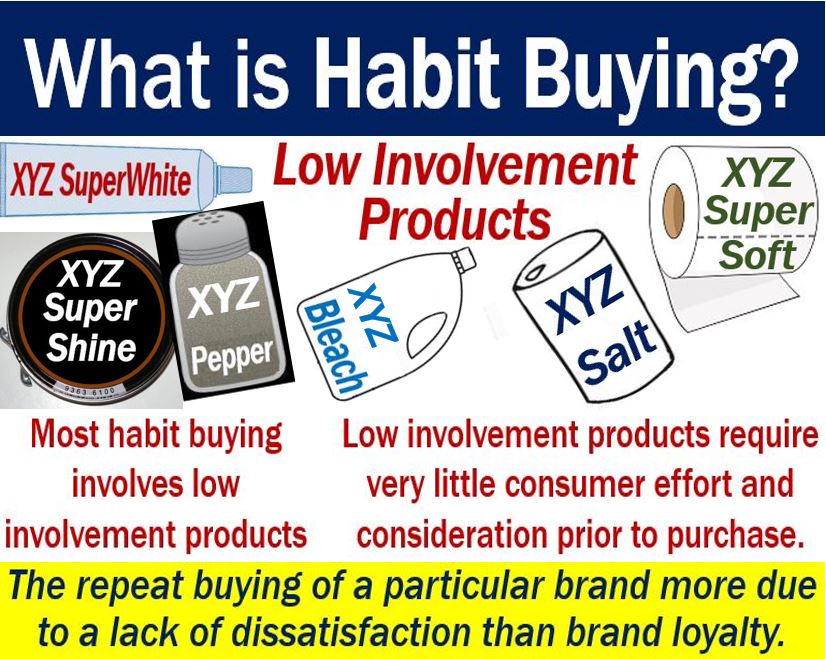Habit Buying or Habitual Buying Behavior refers to purchasing a particular brand again and again. In most cases, the consumer keeps buying the same brand due to a lack of dissatisfaction. In other words, it is not due to brand loyalty, but rather the absence of problems with the product. The consumer has no negative feelings towards the brand.
Habit buying usually occurs with products that do not require a lot of searching. We call them low-involvement products. Toothpaste, salt, black pepper, toilet paper, and polish, for example, are low-involvement products.
People with habitual buying behavior do not evaluate several different brands when choosing a particular product. Put simply; the buyer has acquired the habit because the purchasing experience is straightforward and without problems.

Habit buying and brand loyalty
Habit buying and brand loyalty are similar. In both cases, for example, the consumer purchases the same brand repeatedly. However, the two terms have slightly different meanings.
Brand loyalty occurs when the consumer likes a particular brand over other brands. Therefore, that consumer purchases that brand on a consistent basis. The consumer is aware of that preference and probably talks about it with family, friends, and colleagues.
With brand loyalty, the consumer has strong positive feelings towards a particular brand.
With habit buying, on the other hand, the positive feelings are not strong. The habit buyer purchases something repeatedly because of no complaints, i.e., no dissatisfaction.
With habit buying, the consumer has low involvement in the purchase and sees very few significant differences between brands.
Put simply; with brand loyalty, the positive feelings towards the brand are stronger than with habit buying.
Habit buying vs. impulse buying
Impulse buying occurs when the consumer does not need to purchase that product. Impulse buying is the result of a whim. The word ‘whim’ means a ‘sudden desire,’ especially one that is difficult to explain reasonably.
Let’s imagine you go into a supermarket to buy toothpaste. On your way to the toothpaste aisle, you see a beautiful watch.
You hold the watch in your hand and suddenly decide you want it, so you buy it. You had not planned to purchase that watch. Your decision was on a whim. That is impulse buying.
You then go to the toothpaste aisle and grab a medium-sized tube of XYZ SuperWhite.You have been buying that brand for years.
You are not a very strong advocate of XYZ SuperWhite. However, you have never had any problems with the product.
Your apparent brand loyalty is the result of no dissatisfaction. That is habit buying.
To get a consumer who has been habit buying a product for a long time to change is not easy. It requires a great amount of advertising and marketing.
